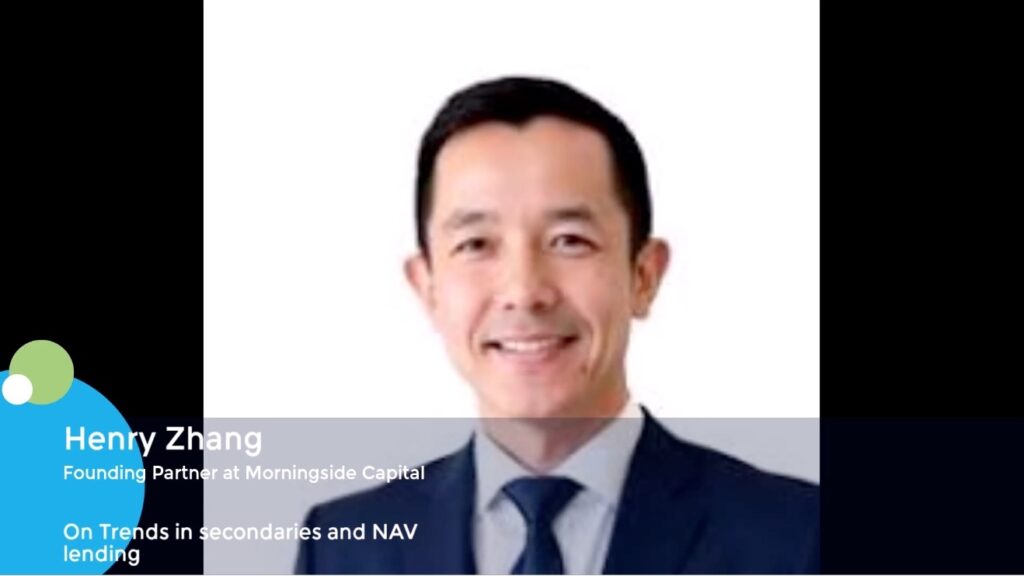Private equity finds openings in Southeast Asia retail as household budgets tighten
There is a broad sense in private equity that Southeast Asia’s macro march toward industrialisation, urbanisation, and greater discretionary spending is an implacable trend supporting consumer sector investment in the region. But as the immediate geopolitical outlook becomes cloudier, this seemingly inviting opportunity set has proven far more nuanced.
To some extent, openings in terms of viable segments amidst the uncertainty can be distilled from industry statistics. In its latest consumer index report and survey, EY found that 69% of Southeast Asia consumers are purchasing only the essentials due to pressures around the rising cost of living. The global rate is only 49%.
Perhaps more relevant to investors implementing operational playbooks, 71% of Southeast Asian consumers said they were delaying purchases until the next big sales event while 29% said they trust artificial intelligence-generated promotions and deals. This compares to 61% and 21% globally.
Olivier Gergele, EY’s ASEAN consumer products and retail leader, observed that rising inflation has not only hit consumer purchasing power, it has increased operating costs for consumer product and retail businesses. To date the response from business owners has been to adjust pricing strategies, enhance product offerings to maintain competitiveness, and focus on cost management.
Conscious of evolving lifestyle overlays, EY sees e-commerce, nutrition, fitness, sports apparel, and luxury goods as growth areas. It expects ASEAN’s e-commerce market to grow 22% a year, reaching a gross merchandise value of USD 230bn by 2026. This outlook includes e-grocery penetration rising from 1%-2% in 2021 to 3%-5% in 2026, when the segment will be worth almost USD 17bn.
“Consumers are becoming more price-sensitive, and this is driving greater demand for discount retailers and value-oriented products,” Gergele said.
“We observe a broader trend of consumption downgrading, where consumers seek more affordable options without compromising on quality. In response, retailers are adapting by introducing sub-brands that offer lower-priced products while maintaining quality standards.”
Tariff terrors
The most precarious new variable in the macro picture is a massive shift in US tariff policy. While many consumer and retail businesses will not be affected directly, knock-on effects in employment, wage growth, and ultimately consumer sentiment appear, to varying degrees, inevitable.
Vietnam is often flagged as the most vulnerable in this sense. Exports of goods and services represented 87% of GDP in 2023, according to the World Bank, the highest rate for any major market in the region. Vietnam’s trade surplus with the US rose 18% in 2024 to USD 123.5bn.
Still, Michael Kokalari, chief economist at Ho Chi Minh City-based VinaCapital, which invests across public and private equity, is tracking an uptick in Vietnamese consumer sentiment, especially in the country’s north.
In this view, Vietnamese consumers are seeing through the hysteria around looming tariffs, maintaining a stable local stock market despite foreign selloffs, and contemplating how recent policy tweaks in the real estate space could ultimately encourage discretionary spending.
“For the rest of this region, the model is to export to China, which takes the raw materials and makes the final products to sell to the US and Europe. Vietnam is essentially directly competing with China for those end-customers, so our economic model is completely flipped from the rest of ASEAN,” Kokalari said.
“We’re not going to get targeted by Trump because the role of Vietnam is too valuable to the US. We’ll not only be okay, I think we’re going to benefit with Trump.”
VinaCapital considers consumer a core sector. Only 16% of the portfolio is in staples and discretionary spending, but this is expected to increase as consumer sentiment warms. Khanh Vu, a deputy managing director at the firm, estimates that retail sales growth, minus inflation, will rise from a currently subdued level around 6% to the usual range of 8%-9% by the end of 2025.
“We are in what seems to be a fallow period, but we’re actually looking at a lot of opportunities,” Vu said. “It’s just going through the diligence and making sure we challenge the business case before we deploy.”
One of VinaCapital’s most recent consumer investments is Mobile World, a private equity darling now listed on the Ho Chi Minh Stock Exchange that has gradually evolved from a telephony specialist into a diversified retailer. Its grocery chain, Bach Hoa Xanh (BHX), has more than 1,700 locations.
Kokalari said that Mobile World tracked a significant increase in basket size per customer in 2024, while Vu noted BHX’s embrace of modern store layouts has recently propelled its profitability. Thomas Lanyi, who first backed Mobile World at Mekong Capital and again at CDH Investments, his current employer, added that the company could achieve market share of more than 60%.
Micro trumps macro
Lanyi, who serves as head of Southeast Asia at CDH, sees the shift to modern trade as a theme that can counterbalance the region’s macro challenges. Despite cooling consumer sentiment and geopolitical overhangs, trends such as the adoption of modern store formats in retail and the migration from public to private providers in areas like education will underpin investment success.
“While markets as a whole may slow or stay flat, structural shifts and market share gains at a lower level can drive growth and returns,” said Lanyi, who describes the phenomenon as a matter of micro trumping macro. “These shifts often not only benefit just a few operators, companies, and brands, but are at times driven by them.”
Nicholas Cator, founder of Singapore-based consumer sector investor Venturi Partners, is collecting evidence that this viewpoint is resonating with LPs.
Venturi claims to have visibility on USD 130m worth of commitments for its second fund, which launched last month with a target of USD 225m. Cator said that while most of the positive feedback from LPs to date reflects the India side of his firm’s emerging Asia mandate, ASEAN’s demographic tailwinds – including changing consumer behaviour patterns – remain an LP draw.
“They [LPs] believe the demographics story because these people are born and entering the workforce. They’re going to consume, and they’re going away from shelter and food into other categories,” Cator said, adding that 88% of Southeast Asia’s population will be considered middle-income by 2030.
One of Venturi’s standout investments in this space is Dali, a Switzerland-based hard discount supermarket chain pursuing an aggressive push in the Philippines. The business aims to deliver value-for-price by limiting stockkeeping units, focusing on private labels, and emphasising local product sourcing where possible.
Dali is partially a play on the shift from traditional wet markets to modern trade and partially a play on the Philippines’ overall food insecurity. The main risk is in bringing the hard discount model to Asia for the first time, but there is ample precedent for success in developing markets, including D1 of Colombia, Tiendas 3B of Mexico, Biedronka of Poland, and BIM of Turkey.
“Hard discount retail has taken 20%-30% market share of every market in the world where it’s been present for more than 10-15 years. That’s just a given, because everywhere in the world, consumers are very happy to pay less and get the same. You can still get great quality with private labels,” Cator added.
Budget bonanza?
Malaysia-based Creador, which has invested heavily in Dali across four tranches, is also detecting LP support for Southeast Asia’s consumption story. The firm closed its sixth flagship fund last month on USD 930m with significant contributions from development finance institutions and Japanese institutions. Creador has historically deployed about 60% in ASEAN versus 40% in India.
“The long-term play with Dali is that people want access to affordable food that is close to their home in a no-frills manner, and to purchase products that are often manufactured onshore or at least nearshore,” said Omar Mahmoud, a managing director at Creador.
“Our view is that value retailers will do well in any cycle of the economy, but when there may be times of recession or high inflation, which leads to a tightening of consumer purse strings, these businesses may get additional benefits as shoppers seek more value for their money.”
It’s difficult to project how household budgets in the Philippines will fare in the medium term. There is a chance that the imports-dependent market could benefit from better pricing as US tariffs redirect the flow of goods. But consumer spending power, significantly driven by a massive call-centre economy, appears especially vulnerable to AI.
Most investors contacted for this story characterised Malaysia as a stable target, with the region’s second-highest GDP per capita after Singapore, nominal GDP growth around 5%, wage growth around 3%, and moderate inflation of less than 2%.
Navis Capital Partners made good on this backdrop last month with the sale of a 100% stake in grocery chain Everrise to Grab for an undisclosed sum. This followed a tripling of the premium store count to 19 and a more than doubling of annual gross revenue to about USD 35m.
The plan revolved around taking the chain upmarket to cater to a relatively affluent layer of consumers, who may be experiencing some pinch in discretionary spending but not enough to alter their daily lifestyle.
“While people are seeing lower salary inflation and costs increasing, we don’t see that affecting what they’re spending on things they put in their pantry,” said a source familiar with the deal. “It’s the bigger ticket items being pushed out.”
Most significantly, Everrise, which operates exclusively in East Malaysia, demonstrated that despite a pervasive macro pressure on spending, the premiumisation trend is thriving far from Kuala Lumpur and the wealthier peninsular states.
Scale propositions
Azam Azman, founder of Malaysia’s COPE Private Equity, is tracking declining consumer demand in the country and expects the downward trajectory to persist, especially when petrol subsidies are revised in the second half of 2025.
He said both upmarket and discount retail plays remained viable but that a company’s ability to expand regionally would be a key investment consideration. The idea is that scale, along with the ability to optimise efficiencies and use technology, is necessary to remain competitive as pressure on household budgets forces consumers to trade down.
“In this environment of economic and geopolitical uncertainty, only brands, be it premium or mass market, that have strong consumer preference and continue to innovate will be better positioned to weather the storm,” Azman said.
“Agility and innovation are critical differentiators, and companies that embrace digitalisation, AI, supply chain optimisation, and data analytics to enhance their product and service offerings will have the upper hand. These capabilities are no longer exclusive to global brands but are becoming fundamental for any consumer-facing business looking to retain and gain future growth.”
Confidence is also returning in Thailand, where Sean Glodek, vice chairman of CT Bright Holdings, expects a resilient tourism industry to continue underpinning spending, at least in terms of food. CT Bright is an investment subsidiary of CP Group, an agribusiness conglomerate with extensive supermarket and convenience interests around the region.
“There’s definitely more growth in ready-to-eat, ready-to-cook, grab-and-go, the frozen space, and food delivery,” Glodek said, adding that technology companies involved in improving customer experiences in retail were also of interest.
“As consumers become more aware of what and how they eat, they tend to pay more attention to where the food is from. So, we like domestic brands that are more attuned to local tastes and mass-market pricing.”
Thailand has consistently ranked as one of the least attractive markets in Southeast Asia in terms of private equity and venture capital deployment in consumer, however.
AVCJ has records for less than USD 120m of investment in Thai consumer in the past 10 years, although the deal flow is considerably more opaque than in the rest of the region. Only 59% of Thai consumer deals featured disclosed investment amounts since 2015. That figure is 65% in Vietnam,
63% in the Philippines, and 63% in Indonesia.
The Indonesia angle
Opacity is a familiar characteristic of Asian private equity and is not restricted to the consumer sector. Similarly, deal flow is notoriously spotty. Intermittent large-cap transactions move the needle in terms of headline numbers, potentially distorting interpretations of the broader opportunity set and how it ties into macro fundamentals.
Indonesia is a case in point. The country ranks second behind Singapore for consumer sector investment over the past 10 years – with USD 3.3bn deployed to Singapore’s USD 3.5bn. However, one-third of the total comes from a single deal: a USD 1.2bn acquisition of gummy candy producer Yupi by Affinity Equity Partners, which was announced late last year.
EY’s Gergele observed that Indonesia is on track to reach USD 1.3tn in total consumption expenditure by 2030, which would make the market one-third of all Southeast Asian consumer spending and the largest single consumer opportunity in the region. Still, it is difficult to find optimism for the country in the current environment among regional investors.
“It’s not like a lot of jobs are getting created, new industries are happening, talent is coming in, and wage growth is in double-digit increments. None of that is happening,” said Arjun Anand, a Singapore-based managing director at global consumer brands specialist Verlinvest.
“Whenever I go to Jakarta, it’s just more of the same and at a pretty slow pace. So, what is there for me to be excited about?”
Verlinvest’s last deal in Southeast Asia was a 2020 investment in Indonesian coffee shop start-up Kopi Kenangan. Since then, the family office has made at least 13 investments in India and one in Australia. Kopi Kenangan is seen as a strong performer in a difficult market but not repeatable.
Much of the drag on sentiment for Indonesia stems from the start-up space, where annual deployment across sectors fell 86% between 2022 and 2024 to USD 349m, according to AVCJ Research. The trajectory has been punctuated by high-profile blow-ups such as the financial fraud investigation into aquaculture start-up eFishery, which has raised USD 300m in venture funding.
Importantly for the consumer sector, that malaise is reverberating in the broader economy, most remarkably in the deterioration of the middle class.
The percentage of national consumption attributable to middle-class consumers in Indonesia declined from 58.7% to 50.9% between 2017 and 2024, according to local investment bank and broker Mandiri Sekuritas. During the same period, the percentage of the population defined as middle class shrank from 22% to 17.1%.
Brian O’Connor, a founding partner at Indonesia-focused Falcon House Partners, identified the regionwide decline in disposable incomes as the biggest challenge for consumer businesses. Fund investors, however, have a different set of concerns.
“The number one thing institutional international LPs usually spend time on is currency,” O’Connor told AVCJ last month. “Number two is governance. It is very important in emerging markets. When they read stories like eFishery and others, it doesn’t help.”












